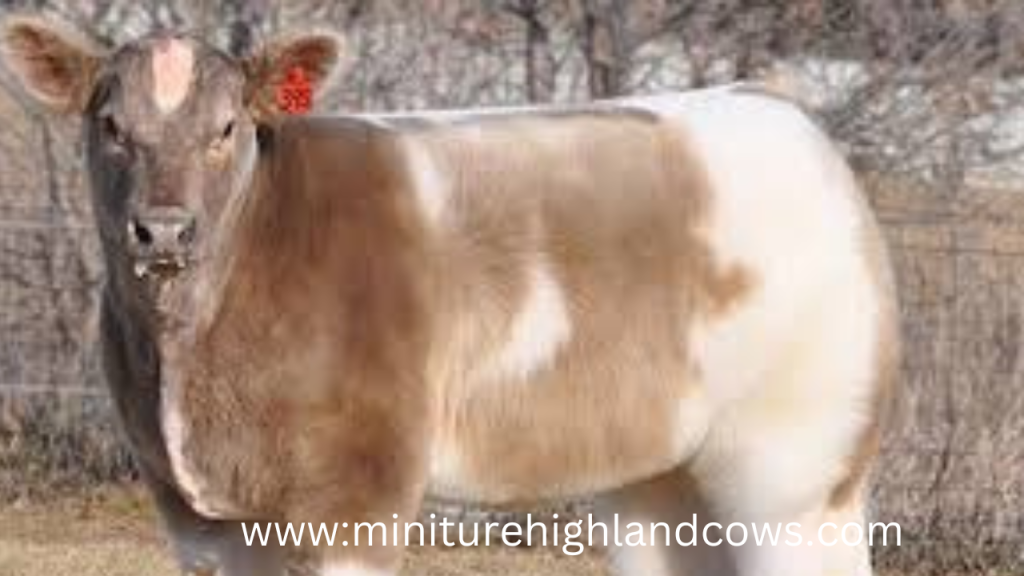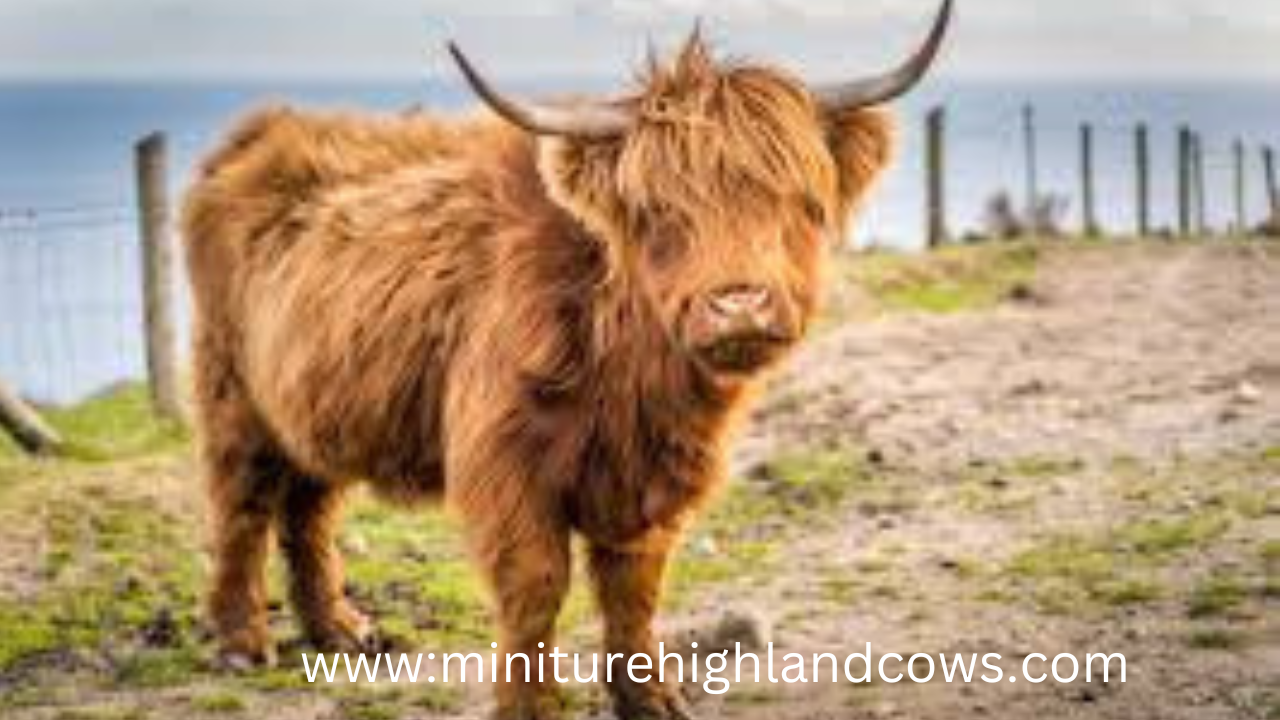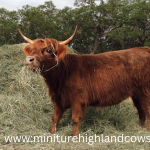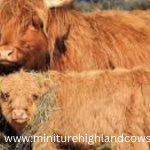The miniature Highland cow is basically a downsized variant of the traditional Highland cattle. These creatures are known for their docile temperament, long-horned shapes, and shaggy coats. The original Highland cow comes from the Highlands of Scotland and was bred especially to tolerate extreme, cold climates and worse lands. These cows have now been bred down in size selectively, to make it easier to deal with small farms, hobby farms, and even pet enthusiasts.

where do fluffy cow live
Fluffy cows, especially Highland cows, are well adapted for extreme weather. Their extremely long, shaggy coats give excellent insulation, so they stay warm with icy temperatures and also resistant to wind and rain.
Life in a nutshell
- They mainly graze
They spend the whole day roving about to look for grass and other vegetation
They often live in herds, which gives them social interaction and some protection.
They can thrive in several environments, be it the Scottish Highlands or milder climates.
Human Care:
- Breeding: Naturally, with immense care, breeding pairs are chosen by farmers in order to keep up with characteristics of the breed and develop them further.
- Feeding: They have a balanced diet of hay, grain, and supplements, especially on harsh weather conditions.
- Shelter: Though they are sturdy, shelter can be provided in extreme conditions.
- Grooming: Not as pampered as the show animals, but they could groom their coats, so that they remain clean and healthy.
Show Animals - Exposures Special Care: Show animals get exposures of special cares including frequent grooming, specialized diets and climate control.
- Training: They may be trained to pose and remain calm for shows.
- Health and Hygiene: Their health is closely monitored to ensure that they are in the best possible condition.
As a whole, fluffy cows live very simple lives, grazing, mingling, and getting accustomed to their surroundings. Their morphological uniqueness and tenacious spirit make them a favorite not only as livestock but also as Internet pets.

Fluffy cow breed
Perhaps, the Highland cattle is the most iconic of all “fluffy cows,” characterized by its shaggy long coat that makes it irresistible and adorable. From the rugged Highlands of Scotland, the Highland cows are well-suited to the cold climate since they are covered with a thick double-layered coat. Its unique coat consists of an outer layer of long coarse hair that sheds rain and an undercoat which works as an insulator in keeping them warm in adverse weather conditions; they are very resilient.
Key Features of Highland Cattle
- Coat and Body: It has long horns, very distinctive “bangs” over their eyes, and a coat found in many colors such as red, black, yellow, white, dun, and silver.
- Temperament: Highland cattle are gentle, hardy, and friendly and perhaps best suited for small farms and even as pets on hobby farms.
- Size Variations: Even though full-sized Highland cows are quite massive, miniature Highland cows have gained popularity in recent years for their endearing compact size and docile nature even in smaller properties.
Other Fluffy Cow Breeds
- Belted Galloway (Miniature Galloway): Another Scottish breed which has a thick, fluffy coat and white “belt” covering their middle.
- Miniature Hereford: Although they are much less woolly than the Highlands, they have a soft fleece and good temperament so are even better suited to small farms.
- Yak Yaks are long, thick, fluffy-coated animals that sometimes masquerade as Highland cattle. Because they can be thriving in some very cold and elevated environments, they are well-suited to survive harsh winters.
These cows remain the quintessential “fluffy cow” with their charma shaggy coat as well as calm nature. Its hardy nature and unique appearance have made it a popular breed around the world.
How much is a Highland cow

The price range can be very wide for a Highland cow, and it is quite varied because of the age, gender, pedigree, coat color, and location. Here’s a general overview of prices for different types of Highland cattle:
Price Range for Highland Cattle
- Calves: The price range of Highland calves is typically in the area of $800 to $3,500. Female calves as well as those with rare or desirable coat colors (silver or brindle) will sell for more money, especially if they have strong bloodlines.
- Yearlings: Yearling Highlands-a one-year age-try to place in a price range of $1,500 to $4,000. Yearlings with excellent pedigrees, friendly temperaments, or unique colors might be pricey.
- Beef Cows Expect to pay between $2,000 and $6,500 for mature Highland cows. Females will be priced higher than males, especially if they are proven breeders or bred (referred to as “bred cows”).
- Bulls Highland bulls bring a range of prices that vary between $2,000 to $7,000 and higher. Age, genetic lineage, and even more importantly whether they are registered will impact the price. Bulls siring valuable breeding pedigrees bring top dollar.
- Pedigree and Genetics: Cows with pedigree registration records, especially from award-winning or excellent lineage, would be pricier.
- Coat Color: The white, dun, and silver coat colors, as these are less common, usually make them worth more than a cow that has another color.
- Age and Health: The price of the cow is usually higher for younger ages, and proven healthy cows usually cost more.
- Breeding Status: Pregnant or “open” cows, cows that have the potential to become pregnant, may command a higher price.
Other Expenses to Factor In
In addition to the cost of purchase, Highland cattle have feed costs, veterinary expenses, shelter, and more. Annual maintenance costs for a single Highland cow can run from $500 to $1,200 or more, depending upon your location and the prices of feed and healthcare.
Summary of Price Ranges
Calves: $ 800-$ 3,500
Yearlings: $1,500-$4,000
Adult Cows: $2,000-$6,500
Bulls: $2,000-$7,000+
The availability in the local market, regional source, and the breeder determine the price, which fluctuates.
Highland miniature cow breeds price
Miniature Highland cows run from reasonably priced to very expensive, depending on their pedigree, coat color, age, gender, and being purebred or crossbreed. In recent years, miniature cattle have also gained popularity as hobby farm animals or even pets, which has driven up the prices. Here is a general price range for miniature Highland cows:
Price Range for Miniature Highland Cows
- Calves: Miniature Highland calves cost between $1,500 and $4,000. If the calf is female and has a color on its coat, like red, dun or silver, females may be sold for a premium price while purebred calves can sell for a premium price if only purebred calves with an excellent pedigree can be sold.
- Bulls and Cows (Adults): Miniature Highland adults – bulls or cows – tend to be priced between $3,000 and $6,000. Higher priced breeding high-quality cows are reserved for extremely unique colors or genetics, or sometimes up into downright too expensive.
- Crosses: While crosses (such as Highland-Dexter or Highland-Hereford) are less expensive, generally those under $1,200 to $3,500 depending on age, size, and other characteristics
- Pedigree and Genetics: Purebred miniature Highland cows with excellent bloodlines or from reputable breeders who have good quality animals will be worth more than other animals.
- Coat Color: Any unique coat color, such as silver or dun, commands a higher price because some colors command a premium in the breeder’s circles.
- Sex: Females are usually costlier than males since they can breed, and the buyer with a vision of increasing his or her herd will pay the premium.
- Age: Calves often fetch less cash than mature cattle; however, some buyers like to get the animal younger so that they can bond with them as they grow.
Other Costs
Apart from the purchase price, it’s good to note that miniature Highland cows require regular maintenance, including vet checkups, vaccination, feeding, and grooming. The normal maintenance for one cow typically ranges from $500 to $1,000 annually. That depends, among other things, on the location of a country house, the quality of feed, and veterinary needs.
Origins and Characteristics of Highland Cattle
Highland cattle are one of the oldest and most distinctive cattle breeds, being traced hundreds of years. They are a hardy breed known for enduring Scotland’s severe weather conditions; they grew thick double coats that insulate from cold and wet weather. The miniature model retains all the unique qualities of the standard Highland cattle but in more compact size, which is why they have become so popular.
Size and Appearance
Minature Highland cows reach 36 to 42 inches at the shoulder in height. This is a backdoor comparison to the standard cattle size which is at around 48-52 inches of the shoulder. Its weight will be somewhere in between 500 and 700 pounds. From a comparative point of view, this is much lighter than the usual 1,200 to 1,800 pounds. Its small size makes them easier to handle; easier to handle, easier to transport, and handle them, especially for small farms or those who are new to cattle raising.
They have the typical shaggy double coat of traditional Highlands, with long coarse hair on the outside and a soft, insulating undercoat. This thick coat serves to keep them warm in colder climates as well as giving them their fluffy endearing appearance. Highland cattle can be nearly any color except white, including black, red, brindle, white, and dun. A long pair of horns curves outward from their heads, making them appear ancient and majestic.
There are already known features about miniature Highland cows, particularly being calm, friendly, and curious in temperament and being suitable for small farms, which qualifies them to be brought into family farms or as pets. Also, they are generally gentle and docile in nature, so it is quite easy to handle them. More so, they do not occupy much space as compared to standard cattle; hence, it is ideal for a person with smaller land areas. Highland cows are equally stout, and their hardiness in the colder climes with little shadiness will favor the farmer who lives in colder places.
They are well-suited to grazing and can graze very effectively, which should decrease the need for heavy feeding and grazing control. This is an excellent characteristic for the farm that has a varied landscape because they are very versatile in grazing on rough or uneven land.
Popular Miniature Highland Crossbreeds
Some miniature Highlands are purebred, but most are crossbred to achieve the smaller size while remaining versatile with desirable characteristics of the Highland. Among the most popular miniature Highland crossbreeds are:
- Miniature Hereford-Highland Cross: The cross combines the friendly temperament and a beefier build of the Hereford with hardy traits and a long coat of the Highland. These crosses may be just a little larger but tend to be very docile and easy to handle.
- Dexter-Highland Cross: Dexter is already a small breed, hardy in nature and sometimes crossed with Highlands for the production of miniature Highland cattle that offer a bit of flexibility regarding both beef production and adaptation to several climatic conditions.
- Zebu-Highland Cross: In warm climates, some breeders cross Highlands with Zebu cattle, famous for their heat tolerance and hardiness. These crosses may be less heavily coated, less muscular, but still possess much of the Highland’s easy-going nature.
Care and Maintenance
Miniature Highland cows are not too high in maintenance. They do need good pasture or hay, clean water, and enough shelter to get them out of the extreme weather. Their very thick coats require very little grooming, although brushing out during shedding season will help keep the coat healthy. The Highlands are very hardy and require very little intervention in the cold weather as it is the double layer of coat that really well-insulates.
As with any breed of cattle, routine care such as hoof trimming, vaccinations, and deworming should be planned. Highlands tend to mature more slowly than other cattle breeds, with many living up to 20 years, and maturity is reached more gradually. This slower rate tends to make them not as ideal for quick beef production, but it’s best suited for those who want to have a long-term companion or farm animal.
Popularity and Social Media Frenzy
These miniature Highland cows have gone virally popular, especially because they can be photographed like nobody’s business. Their rugged coats, expressive eyes, and friendly natures make them the most sought-after subject in the social media arena, especially when they appear on cute videos and pictures. They have become a hot attraction in the public-access farms where farm visitors view their unique look and like them immensely, especially the children.
Why Miniature Highland Cows?
High miniature Highland cows are ideal for small farms, mini-farms, or a friendly farm animal. They introduce the advantages of cattle at a smaller scale and include companionship, grazing support, and a charmingly cute appearance. Their hardiness, with manageable size, makes it one of the best suitable breeds for small-scale farms or hobby farms and is excellent for families that want a friendly, eye candy add-on to the land.
Summary
These small Highland cows provide all the unusual traits of full-sized Highland cattle, but in a smaller package. Hardiness, manageable size, and gentle nature make miniatures an excellent choice for the want of cattle without necessarily having to cope with the hassle of large animals. As companions, grazing animals or an addition to some picturesque small farm, miniature Highland cows are an excellent and increasingly popular choice.










